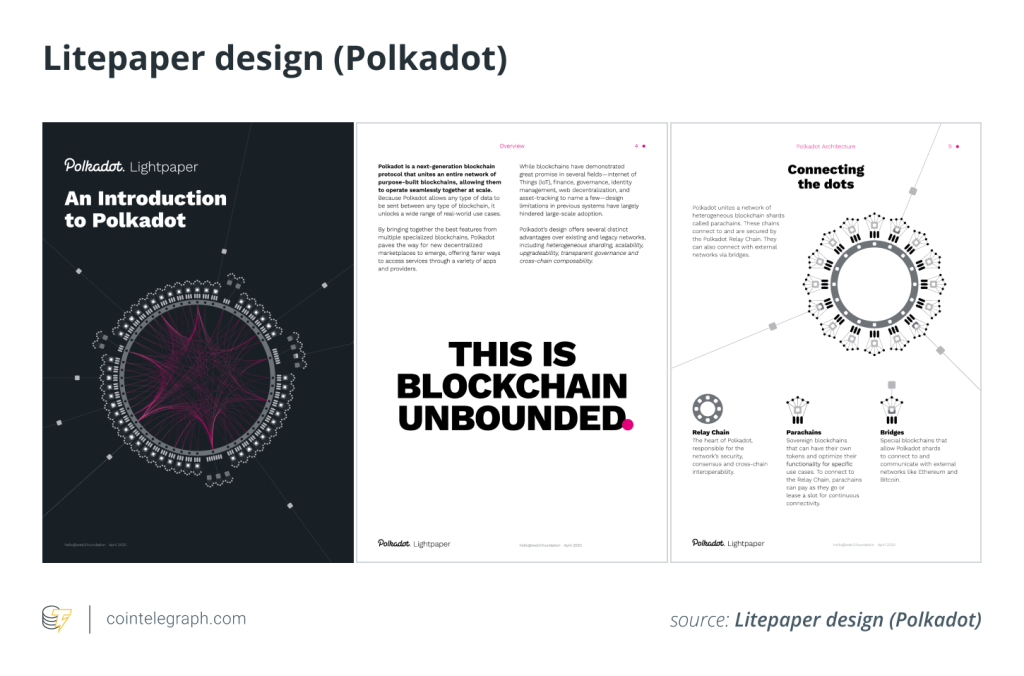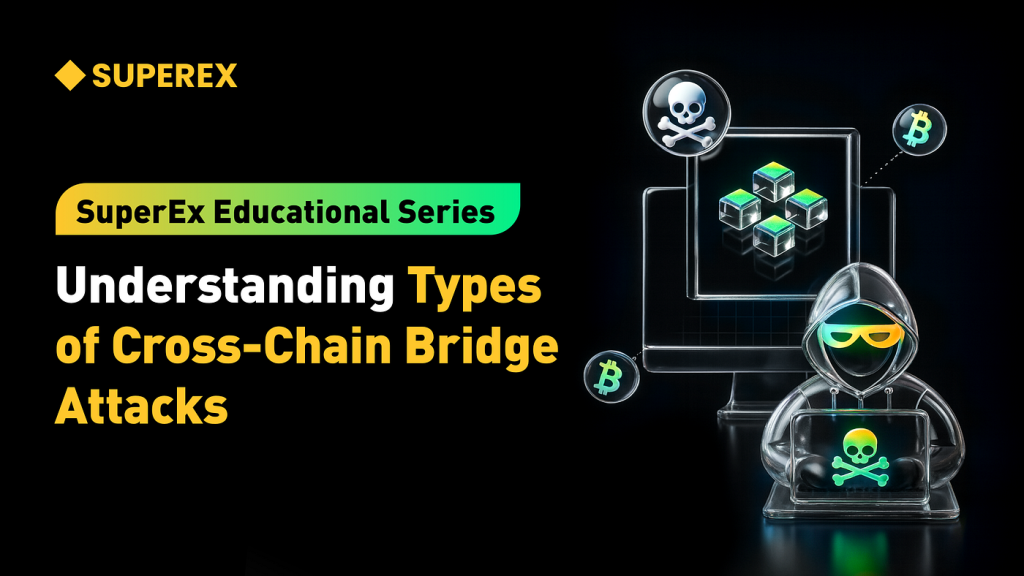What is a litepaper? A beginner’s guide on how to write and format it


What is a litepaper?
Briefly put, a litepaper can be considered a teaser version of a whitepaper. It is a shortened more concise version of a whitepaper and serves to pique the interest of curious users and investors.
You’re probably more familiar with the whitepaper, which is a requirement when launching a blockchain project in the world of crypto. Perhaps the most famous whitepaper thus far in crypto history is Satoshi Nakamoto’s “Bitcoin: A Peer-to-Peer Electronic Cash System,” published on October 31, 2008.
Today, whitepapers continue to be a valuable source of information concerning a crypto project. However, given the fleeting attention spans of people in the digital age, reading a sixty-page or so document to see if a project interests you doesn’t sound practical.
Whitepapers also tend to buckle down on the technical aspect of a project. Most crypto enthusiasts might take the time to read a highly technical paper that interests them. However, it’s still not for everyone, especially if you’re looking for investors. It might be too tedious, or they might simply not have the time, despite their interest in or capacity to invest in a project.
Enter the litepaper, which, true to its name, aims to be a lighter version of the more comprehensive whitepaper. So, technically, what is the difference between a whitepaper and a litepaper?
A whitepaper is long, thorough and technical. Much like an academic paper, your whitepaper is a well-documented record of all the details your investors would want to know about the project.
Meanwhile, a litepaper’s goal is to provide all the fundamental details about the project while keeping things “light,” so to speak. It is designed to capture the interest of even those who may not have the time or inclination to read a highly technical paper.
Much like a trailer to a movie, a litepaper is short but with enough details about the project to arouse interest among its readers.
Here’s a quick comparison of the key differences between a whitepaper vs. a litepaper:

How to write a litepaper?
Once you’re ready with your product and are confident about it, the next step when starting an initial coin offering (ICO) is writing a really good litepaper. While it might be tempting (and easier) to treat your litepaper like a “stripped down” or “boiled down” version of your whitepaper by just lifting sections from it, it is not something you want to do.
Instead, writing your litepaper should be treated as a momentous first step in your ICO journey — it can literally make or break the success of your project. It can often be a potential investor’s first encounter with the ideas behind your project, the inner workings, the applications and more.
Now, imagine if you were to write down a watered-down lackluster version of your whitepaper? Of course, not everything boils down to your litepaper, you’ll have to ramp up marketing and promotional efforts as well. But, let’s be real: Not everyone will read your entire litepaper. Especially in a space where transactions are lightning-fast, people also won’t want to waste their time going through various pages of something they might not find themselves invested in.
Your litepaper on the cryptocurrency project should articulate what your product aims to do, how blockchain technology will be applied within the project and how a token economy can support it. It should also contain information about your current team, product, initial numbers, use cases and applications, as well as projected funds and expenses.
As much as possible, try to keep your litepaper and whitepaper consistent in terms of writing style, language and tone. The goal is to have a natural flow for the reader from your litepaper to your whitepaper. Hence, the same team or person that wrote your whitepaper should ideally be responsible for the litepaper as well.
How to format a litepaper?
In terms of length, a litepaper should ideally be as concise as possible, wrapping up all key ideas within seven to eight pages. Much like Einstein said, “If you can’t explain it simply, you don’t understand it well enough,” a good litepaper should be brief, yet engaging and informative. So, if you can do it in five to six pages, that’s even better.
The upper limit of a litepaper’s length is ten to twelve pages. While you might want to put as many details as possible on the litepaper, you have to remember that its goal is not to reveal everything in one go. You want to create that “spark” in people that will entice them to know more about the project and drive them to read the whitepaper.
In the next section, you’ll see an outline and a detailed explanation of the components that you should ideally have in your litepaper.
What to write in your litepaper?
So what should a crypto litepaper include? Ideally, you should have a high-level summary of your business idea, the problem you’re addressing, your market and its size, your project’s unique value proposition and other pertinent details. Talk about the money you’re going to raise and how you intend to use it.
As much as possible, veer away from writing down complicated formulas that your general audience will not understand and avoid elucidating too much. Stick to what’s essential, and write it like you’re writing an elevator sales pitch.
Below are the ideal components of a litepaper. Note that there might be other details or points of interest you might want to highlight depending on your project. Feel free to add them as standalone sections or incorporate them within the most appropriate component.

An introduction
Your introduction is effectively a summary of your entire project. Make your introduction as simply worded as possible while keeping it engaging. While writing it, remember the Shakespearean proverb, “Brevity is the soul of wit.”
As tempting as it may be to try and wow your readers with all the technicalities of the project, steer clear from jargon or technical language for now. Your whitepaper will deal with taking your readers through the technical aspects of your project.
Crafting your introduction is crucial because it will set the tone for the entire paper. Use clear, concise language and focus on what makes your project unique. Your goal is to entice the reader to move from the introduction to the other sections and, hopefully, to your token sale.

Introduction section of Polkadot’s litepaper
Outline of the problem
This next section will highlight the problem (or problems) that your project aims to address. Again, without going into too much technical detail, help the readers appreciate what your project will do. Address how they can benefit from the project and issues that your project will make easier by outlining real-life scenarios.
In this section, you should also underscore how big the market is by illustrating how many people in the ecosystem deal with the problems you’re going to solve. Try to use as much descriptive and illustrative language as possible.
Keep in mind that while you are familiar with your project and how groundbreaking it is, your audience isn’t (yet). So, help them get a clear understanding of it through this section.
How you intend to solve the problem
In this section, explain how exactly your project aims to solve the problems outlined in the previous section. There’s no need to write down complex formulas unless absolutely necessary to your explanation.
Describe how your solution will operate, what makes it unique and how that will provide users with incredible value. This section should be where you highlight the potential of your project.
Talk about how much bigger the current market can get and the potential for many other solutions to spring from your current project. For example, think about the Ethereum ecosystem, which has grown massively and has paved the way for various platforms to be built on it.
Quick market figures
Here’s where you can bust out the numbers in your litepaper. Use relevant statistics to back up your claims, supporting the thesis that your solution (the project) is truly a smart, promising and viable one.
This section is where you’ll get to drill down your proposition. By presenting as much relevant data as possible, you’ll help your readers see exactly why your solution will work.

Quick market figures (crypto economics) in Cartesi’s litepaper
Details on the token you’re selling
Include clear details on the tokens you are selling. Specify how it will be used within the system, what the supply cap is, as well as the details about the token sale model you’re using. Indicate if you’re using Dutch auction, capped or uncapped with fixed rates or another token sale model, for example.

If you are interested, we invite you to read more about token sale models.
Mention your plans for conducting a presale or private sale prior to the launch, if any. Make sure to highlight that your token sale model is friendly to community members and investors alike.
Use clear concise language and help the reader to understand how the token will be used. Using real-life scenarios here might be a good idea. This section aims to give the reader a picture of how the project will go and how promising the token sale can be.

Info about the DOT token in Polkadot’s litepaper
History and background of the team
Your team’s history and credibility are what investors will look at. Highlight a varied mix of specializations within your team, your track records, previous project successes and other relevant information.
Since you are launching in the crypto space, it’s a given that each founder should already have an established online presence beforehand. True to the nature of blockchain, founders must also understand that people need a verifiable online history of the team’s experiences. This detailed public record will lend legitimacy to the project.
Transparency in this regard also addresses any concerns about fraud. ICOs have gotten quite a bad rap because of far-reaching scams that have fooled thousands, given the ease with which scammers can easily set up a fake website, collect token sales and never be seen again online.
Website and contact details
This section is very important because this is where interested users and investors will go to know more about your project. Make your team accessible through various platforms and make sure your website contains all the relevant information they might need.
Embedded links are recommended for a better user experience. Having your readers copy and paste URLs might result in them losing interest or forgetting to navigate to them altogether. Your goal is to make the user journey as easy and smooth as possible.
Make sure people can find you easily. Don’t forget to link all of your channels like Slack, Discord, Telegram, Reddit, Facebook, Twitter, etc. Remember that the community is an important aspect of any company, even more so for a blockchain company.

Website and contact info on Polkadot and Cartesi litepapers
Software details
This portion is dedicated to any technical details required to test your project. If, for example, your project would require them to download a wallet or other client software, make sure to include any relevant links with quick instructions.
This is one of the crucial last stages of your reader’s journey and, ideally, they’ll want to test out your project after reading the litepaper. Complete details and links about the software will make testing easier and ensure that users download the right software, steering them away from any spam or malicious versions.
Important things to keep in mind while writing a litepaper
As with any writing endeavor, there are no hard and fast rules when writing a litepaper. Since it’s a more creative counterpart of your whitepaper, there are certain writing guidelines that you can follow to ensure that your output will capture the interest of your readers.
We’ve compiled a list below of general guidelines to follow when writing a litepaper:
Distribute content into smaller more readable sections
Stay away from writing long chunks of texts inside paragraphs. Instead, keep your sentences short and limit your paragraphs to around 60 words. This makes your paper easier on the eyes and less tedious to read.
Help readers see your project’s potential
Keep in mind that while you and your team are well aware of your project’s potential, your readers are just hearing about it. Help potential investors see how they can benefit from it by articulating your ideas well.
Since most of your readers will likely be crypto investors, you can also mention your token sales summary sheet to drive your point better.
Use flowcharts and diagrams to support your claims
When defining the current market situation, make sure you always pivot back to how your project can address certain gaps and problems in the present-day setup. This will help investors, as well as exchange platforms, see your vision.
Illustrate and bolster your points by using clear well-laid-out flowcharts, maps and diagrams to help readers visualize data clearly. Use tools like Lucidchart and OmniGraffle to create diagrams, technical architecture and more.
Build up investors’ confidence in your team and work
Your litepaper is a great place to highlight your team’s credentials and work experience. Feel free to write engaging content around each founder’s achievements concerning crypto and how every member’s unique background has contributed to creating a great project.
A strong and experienced team is one of the most important things that investors look out for when deciding whether to support a project or not. This is not the place to shy away from detailing your achievements to support your credibility, so be generous with the relevant details.
Speak their language
Depending on your target audience, you’ll want to adjust how you write your paper. Once you’ve figured out who you’re trying to reach, choose an issue or “pain point” that is interesting to them. It can be a common problem in the industry that they’ll relate to. You can also use case studies and success stories to help your points come across clearly.
Be engaging but still professional
Your litepaper is not a blog post, so while you’re working to keep things as engaging as possible, remember to keep your language on the professional side. Not extremely formal but not too casual either.
Work on your intro, and then re-work it
Stephen King once said “To write is human, to edit is divine.” Keep this in mind when writing your introduction. After you’ve completed drafting your litepaper, circle back to the introduction to see if it ties in well with the other parts.
As mentioned earlier, a good introduction will catch your reader’s attention right off the bat and entice them to read the entire document.
Emphasize the value your project will create
Use your litepaper to highlight your level of expertise and insight and how your project can help your readers in its own unique way. Offer your readers helpful information to help them see your point and paint your project as accurately as possible while emphasizing its value proposition.
Start with an outline
Organize your draft by starting with a clear outline. You can use the sections we outlined above and then tweak them to fit your project better. Having an outline will help facilitate the flow of your litepaper and will lend a sense of organization. Your goal is to lead them from the intro (piquing their curiosity) to your website, software and contact details (prompting them to take action).
Don’t overthink your draft
Once you’ve outlined what you want to write, go ahead and type away. Don’t worry too much about editing until you’ve completed your first draft. Just get started, especially while your ideas are still fresh. You can always edit and polish your draft afterward.
Proofread, proofread and proofread
After you’ve edited your final document, go back over it to ensure that there are no mistakes. A paper filled with typos and grammatical mistakes might deter your readers from reading any further, so make sure to proofread at least thrice before considering anything final.
If possible, ask someone else from your team to proofread your document since another set of eyes might give you a new perspective and also help spot errors you missed. Read the paper out loud to check if it flows well and is interesting.
Don’t neglect design
Keep things interesting by incorporating clean design elements into your litepaper. A well-designed paper doesn’t have to be elaborate, it only has to highlight the contents of the paper. Choose a design layout that doesn’t clash with your project’s concept or take away too much attention from the text.
Litepaper design (Polkadot)
Follow up with ways you can help
If your project aims to help your readers via the use of a product or service, make sure to mention it. Highlight your vision and make sure to convey the idea or story behind your project.
Litepaper examples
It’s important and helpful to review what’s been published by peers and competitors. Go over litepapers of successful and maybe even less successful projects to get a clear picture of what a good litepaper looks like.
Check out these examples of actual crypto litepapers below:
-
NFTX litepaper
-
Origin litepaper
-
Polkadot litepaper
-
Cartesi litepaper
-
Neufund litepaper
-
Blockbank litepaper
You may also find articles on fundraising helpful, as well as other how-to guides when raising funds for a crypto project.







… [Trackback]
[…] Read More on that Topic: x.superex.com/academys/beginner/2578/ […]
… [Trackback]
[…] Find More on that Topic: x.superex.com/academys/beginner/2578/ […]
… [Trackback]
[…] Read More on to that Topic: x.superex.com/academys/beginner/2578/ […]
… [Trackback]
[…] Find More to that Topic: x.superex.com/academys/beginner/2578/ […]
… [Trackback]
[…] Read More to that Topic: x.superex.com/academys/beginner/2578/ […]
… [Trackback]
[…] Find More to that Topic: x.superex.com/academys/beginner/2578/ […]
… [Trackback]
[…] Find More here to that Topic: x.superex.com/academys/beginner/2578/ […]
… [Trackback]
[…] Info on that Topic: x.superex.com/academys/beginner/2578/ […]
… [Trackback]
[…] Find More here to that Topic: x.superex.com/academys/beginner/2578/ […]
… [Trackback]
[…] Find More to that Topic: x.superex.com/academys/beginner/2578/ […]